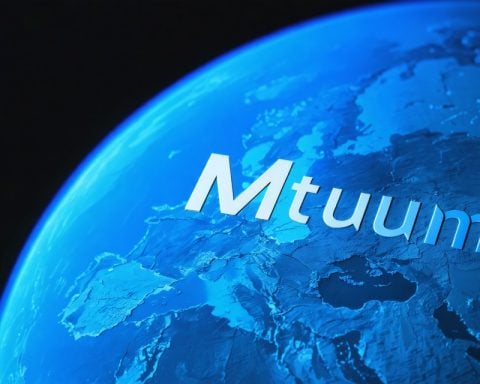What goes up must come down. A defunct Chinese satellite made headlines this past Saturday as it re-entered Earth’s atmosphere, dazzling observers with its fiery descent.
The satellite in question was GaoJing 1-02, part of a constellation launched into low-Earth orbit in 2016. As it plummeted towards the planet, it created a spectacle over several states including Mississippi, Missouri, and Arkansas. Many witnesses mistook this lighting display for a meteor shower.
Prominent astronomer Jonathan McDowell reported that the satellite’s fiery return began above New Orleans, where it broke apart while heading northward. NASA scientist Marc Fries added that weather radars tracked falling debris as the fireball blazed across Jackson, Mississippi, extending its trajectory toward neighboring states.
When spacecraft like GaoJing 1-02 re-enter the atmosphere, they travel at alarming speeds, generating substantial heat due to air resistance. While McDowell mentioned the satellite’s relatively small size might imply it disintegrated entirely before impacting the ground, there remains a chance that tiny fragments could have landed undetected.
So far, no evidence of recovered debris has surfaced, despite the American Meteor Society receiving over 120 reports of the event. This incident underscores the frequency of satellite re-entries today—most lead to a safe descent, while larger objects still pose some risk, albeit rare for damage on land.
Fiery Satellite Re-Entry: A Spectacle and a Safety Concern
The Event and Its Observers
A recent event captured the attention of many across the United States as the GaoJing 1-02 satellite re-entered Earth’s atmosphere on Saturday, creating a breathtaking display reminiscent of a meteor shower. This satellite, launched in 2016 as part of a low-Earth orbit constellation, produced a fiery descent that was particularly visible over states like Mississippi, Missouri, and Arkansas.
Witnesses were awestruck by the dazzling light as the satellite began its descent above New Orleans, breaking apart while moving northward. Prominent astronomer Jonathan McDowell confirmed that this descent event was significant enough to be tracked by weather radars, which helped monitor the trajectory of the debris.
How Re-entries Work
When objects like GaoJing 1-02 re-enter the atmosphere, they descend at extraordinarily high speeds. This rapid travel generates immense heat due to friction with the atmosphere. The satellite’s relatively small size leads to significant chances of complete disintegration, but there’s always a possibility that minor fragments could survive the fiery journey and land undetected.
Safety Considerations and Public Interest
Despite extensive monitoring and the public’s immense interest in such events, no debris from the GaoJing 1-02 has been successfully recovered. The American Meteor Society was inundated with over 120 reports concerning the re-entry, showcasing the fascination and concern the public holds about falling satellites and space debris.
It is essential to mention that while the majority of satellite re-entries are safe, larger objects pose a rare but real risk of causing damage if they fail to burn up entirely during descent. Authorities and scientists continuously monitor these events to ensure public safety.
Innovations in Space Monitoring
Advancements in satellite monitoring technologies have improved the ability to track such events. Current radar and satellite technologies allow for real-time tracking of re-entries, providing critical data and enhancing public awareness. This innovation plays a vital role in mitigating risks associated with space debris.
Future Predictions
As the number of satellites in orbit continues to increase, the frequency of such re-entry events will likely rise. Experts predict that new guidelines and technologies will emerge to enhance safety measures and manage the growing space debris issue. The push for sustainability in space exploration is becoming increasingly important as more nations and companies aim to optimize the use of low-Earth orbit for various missions.
Conclusion
The re-entry of the GaoJing 1-02 satellite serves as a reminder of the beauty and unpredictability of space exploration. While the spectacle fascinated many, it also raises important questions about safety and the future of our skies. For more insights into satellite technology and space, visit NASA for the latest developments and safety measures.









